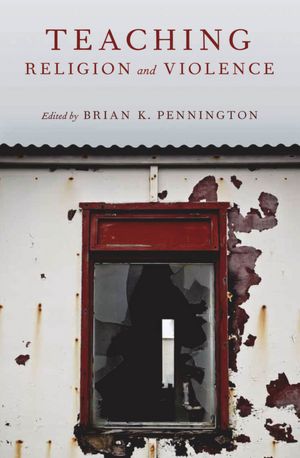Dr. Pennington publishes book on religion, violence
 It can seem from what one encounters in the media that religion and violence often go hand-in-hand. However, Dr. Brian Pennington, professor of religion at Maryville College, asserts that this is not a valid claim.
It can seem from what one encounters in the media that religion and violence often go hand-in-hand. However, Dr. Brian Pennington, professor of religion at Maryville College, asserts that this is not a valid claim.
In “Teaching Religion and Violence,” a book published this year by Oxford University Press, Pennington claims that the factors which cause religious groups to take up arms are highly complex.
The book is a collection of essays from 13 different scholars, including Pennington, who served as editor of the project. It was published as a part of Oxford University’s AAR Teaching Religious Studies series.
The idea for the project came from discussion about religious violence in the early days of the United States’ ongoing war in Afghanistan.
“A group of colleagues and I got together and held a panel discussion at the American Academy of Religion’s national meeting,” Pennington said. “Out of those discussions, this book came. . . The people who were involved in that original discussion and others from whom we solicited essays joined in.”
Pennington noted that while it is commonly thought that there are certain religious traditions that are more inherently prone to commit acts of religious violence, this is not necessarily true.
“The lesson is, when religious violence happens, it is because someone planned it and executed it,” Pennington said. “It is not because a people either have belonged to a tradition that is inherently violent or because they are reacting emotionally to current events.”
In their essays, the scholars in the book claim that religious violence is actually a result of highly contingent and rare situations.
“It only takes place in certain circumstances,” Pennington said. “It is actually very difficult to mobilize religious traditions to commit violence, and it requires a great deal of strategizing and organizing. It makes violent acts that justify themselves in the name of religion all the more important, because they don’t spontaneously erupt out of religious communities.”
There are two sections in the book, entitled “Traditions” and “Approaches.”
The first is deals with the violence in specific religious traditions. It touches on the history of the discussion of violence in various religious traditions, including non-violence. Pennington’s essay in the book deals with his specialty, Hinduism, and that tradition’s attitude towards violence.
The second part of the book specifically deals with techniques professors can use in teaching about religious violence the classroom. Professors in this section analyze their respective class experiences teaching about violence and non-violence in religion.
The book seeks to explore ways in which the study of religious violence has been approached in the past and techniques through which educators can engage students in that discussion. Its main audience is professors, who can use the book as a source for bettering their teaching methods when addressing religious violence.
“The overarching question the book seeks to answer is, ‘How do you get undergraduates to analyze episodes of religious violence in a particular religious tradition so that they can appreciate the complexity of factors that give rise to religious violence?’” Pennington said.
Pennington and the other contributing scholars hope that, by developing their skills and knowledge in the liberal arts, undergraduate students will be better able to engage in the complex discussion surrounding the issue of violence in religion.
He hopes as well that students will also begin to understand the motivational and implementational intricacies of actualized religious violence.

